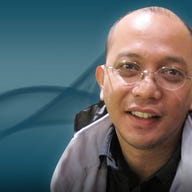Philippine semicon on way up after 'hitting bottom'

MANILA--The Philippine semiconductor industry is now slowly on the road to recovery after being paralyzed by the slowdown in global demand for electronic products.
In a press briefing Wednesday, industry group Semiconductor and Electronics Industries in the Philippines Inc. (SEIPI) said latest figures show exports are gradually picking up since the start of the year.
"From January to March, the industry has seen the bottom, and exports business has been moving up to a positive growth rate month on month--from 0.76 percent to 1 percent to 9 percent, respectively," SEIPI said in a press statement.
The semiconductor sector is the country's top export earner in recent decades.
Ernie Santiago, executive director of the SEIPI, said total electronics exports in the first quarter reached US$40 million, but this figure is still dwarfed by the US$200 million revenue posted during the same period last year.
Santiago said these "small achievements" pushed the industry group to revise its "growth" forecast for the year, from a gloomy negative growth of 30 percent to a smaller dip of 20 percent.
Noel Pabilona, an officer of the SEIPI, said a good indicator that the worst may be over was that worldwide IC (integrated chip) sales grew by 6 percent in the first three months of 2009.
"We may have hit the bottom during the first quarter of the year. We can now say that we are now on the early part of recovery," said Pabilona, who is also chair of the Association of Electronics and Semiconductors for Safety and Environmental Protection (AESSEP).
He also noted that with the storm finally settling, the industry has begun to employ or rehire workers who were affected by the crisis. About 20 to 30 percent of the industry's 402,000 employees were said to have been laid off, or whose work week was reduced or contracted.
Economist Bernardo Villegas, a professor at the University of Asia and the Pacific, said recently in a forum the heydays of the semiconductor and electronics industry may finally be over.
Asked about Villegas' observation, Santiago said: "Prof. Villegas made that statement on the assumption that there won't be any infrastructure that will support the industry. But, as you can see, the government is giving us all the support."
Lilia de Lima, director general of the Philippine Economic Zone Authority, said during the briefing that foreign investments, most of which were in the semiconductor and electronics sector, grew 18 percent to 9.7 billion pesos (US$205.6 million) in May 2009, from 8.3 billion pesos (US$174.9 million) in the previous year.
Albert Lina, president of the local franchisee of Federal Express, said inbound and outbound shipments have been steadily climbing in the last two months, indicating that the economic upturn is around the corner.
The SEIPI acknowledged the industry was hit hard by the crisis, as demonstrated by the departure of Intel from the Philippines when the chipmaker closed its local test and assembly plant.
However, the industry has also seen some companies pouring in investments. Texas Instruments, for instance, is ramping up production in its new US$4 billion facility in Clark, a former American air base in the northern province of Pampanga.
Melvin G. Calimag is a freelance IT writer based in the Philippines.